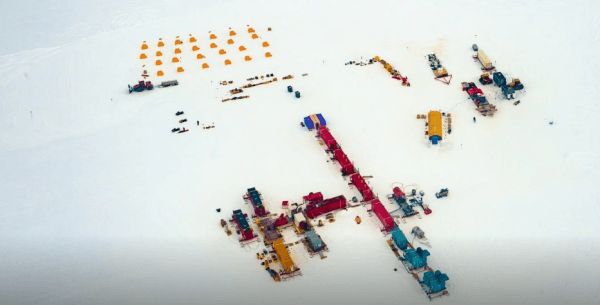More than half of the planet’s fresh water is in Antarctica.
More than half of the planet’s fresh water is in Antarctica. While most of it is frozen in the ice sheets, underneath the ice pools and streams of water flow into one another and into the Southern Ocean surrounding the continent. Understanding the movement of this water, and what is dissolved in it as solutes, reveals how carbon and nutrients from the land may support life in the coastal ocean.
Gathering data on the biogeochemistry of these systems is an undertaking of Antarctic proportions. Trista Vick-Majors, assistant professor of Biological Sciences at Michigan Technological University, is part of a team that gathered samples from the Whillans Subglacial Lake in West Antarctica and is lead author on a paper about the lake, recently published in Global Biogeochemical Cycles.
“Life is tough — it can handle a lot,” Vick-Majors said. “This paper is putting together what we know about the biology and how active it is under Antarctic ice with information about the composition of organic carbon in the lake.”
Read more at Michigan Technological University
Image: The camp above Whillans Subglacial Lake sits 800 meters above the water. Credit: JT Thomas




